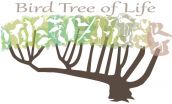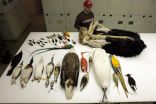Blood lipid metabolites allow early identification of cardiovascular disease
2014-12-11
(Press-News.org) New circulating metabolites might allow early diagnosis of cardiovascular disease. A team of scientists from Uppsala University, Karolinska Institutet and Colorado State University have identified novel lipid-derived molecules associated with future coronary heart disease events. The study published in the journal PLOS Genetics has examined the metabolic profile of blood samples from more than 3,600 individuals that have been followed-up for up to 10 years.
Professor Erik Ingelsson and graduate student Andrea Ganna have used novel biochemical and bioinformatics approaches to identify small molecules that are the intermediate- or end-products of metabolism. This approach, called metabolomics, has identified two lipid metabolites, lysophosphatidylcholine and sphingomyelin that reduced the risk of developing coronary heart disease in three Swedish population studies. Another lipid metabolite, monoglyceride, was instead associated with increased risk of coronary heart disease.
One of the strengths of this study was that all participants were profiled for both metabolites and genetic variants. Some of the metabolites showed strong association with genetic variants previously associated with coronary heart disease supporting a common underlying molecular mechanism. Another strength was that the results were replicated in studies with different follow-up time, blood partition, age and sex distribution, increasing the generalizability of the findings.
This study shows the advantages of integrating different -omics technologies in large epidemiological studies. The blood lipid metabolites identified could be useful in prediction of future cardiovascular disease. In vivo experiments are ongoing to investigate the potential causal role of these metabolites in the development of cardiovascular disease. If confirmed, these findings could also point to new therapeutic targets.
INFORMATION:
http://www.plosgenetics.org/doi/pgen.1004801 END
ELSE PRESS RELEASES FROM THIS DATE:
2014-12-11
CHAMPAIGN, Ill. -- An international effort involving more than 100 researchers, nine supercomputers and about 400 years of CPU time has yielded the most reliable avian tree of life yet produced, researchers report in the journal Science. The tree reflects the evolutionary relationships of 48 species of birds.
The paper describing the bird family tree is one of eight articles on avian evolution published together in Science. The overall endeavor was coordinated by Erich Jarvis of Duke University; M. Thomas P. Gilbert of the Natural History Museum of Denmark; and Guojie ...
2014-12-11
Crocodiles are the closest living relatives of the birds, sharing a common ancestor that lived around 240 million years ago and also gave rise to the dinosaurs. A new study of crocodilian genomes led by scientists at UC Santa Cruz reveals an exceptionally slow rate of genome evolution in the crocodilians (a group that includes crocodiles, caimans, alligators, and gharials).
The UC Santa Cruz team used the crocodilian genomes, combined with newly published bird genomes, to reconstruct a partial genome of the common ancestor of crocodiles, birds, and dinosaurs. The study, ...
2014-12-11
Conventional wisdom holds that changing the views of voters on divisive issues is difficult if not impossible -- and that when change does occur, it is almost always temporary.
But Michael LaCour, a UCLA doctoral candidate in political science, and Donald Green, a Columbia University political science professor, have demonstrated that a single conversation can go a long way toward building lasting support for a controversial social issue. In addition -- nearly as surprisingly -- the effect tends to spill over to friends and family members.
The key is putting voters ...
2014-12-11
A new computational technique developed at The University of Texas at Austin has enabled an international consortium to produce an avian tree of life that points to the origins of various bird species. A graduate student at the university is a leading author on papers describing the new technique and sharing the consortium's findings about bird evolution in the journal Science.
The results of the four-year effort -- which relied in part on supercomputers at the university's Texas Advanced Computing Center (TACC) -- shed light on the timing of a "big bang" in bird evolution, ...
2014-12-11
RIVERSIDE, Calif. - The absence of teeth or "edentulism" has evolved on multiple occasions within vertebrates including birds, turtles, and a few groups of mammals such as anteaters, baleen whales and pangolins. Where early birds are concerned, the fossil record is fragmentary. A question that has intrigued biologists is: Based on this fossil record, were teeth lost in the common ancestor of all living birds or convergently in two or more independent lineages of birds?
A research team led by biologists at the University of California, Riverside and Montclair State University, ...
2014-12-11
LOS ANGELES, Dec. 11, 2014-- It's possible to lastingly persuade conservative voters to support a controversial issue like marriage for same-sex couples--and at a greatly accelerated rate compared to their neighbors--according to groundbreaking data published in this week's issue of the peer-reviewed journal Science. The 12-month study also shows how the Los Angeles LGBT Center's voter persuasion methods reduced anti-gay prejudice and may have the potential to reduce other forms of prejudice.
The independent researchers who led the study, prominent Columbia University ...
2014-12-11
This news release is available in Danish and also Chinese on EurekAlert! Chinese.
An international effort to sequence the genomes of 45 avian species has yielded the most reliable tree of life for birds to date. This new avian family tree helps to clarify how modern birds--the most species-rich class of four-limbed vertebrates on the planet--emerged rapidly from a mass extinction event that wiped out all of the dinosaurs approximately 66 million years ago.
It reveals how some of the earliest bird species diverged, answering many long-standing questions about the common ...
2014-12-11
SALT LAKE CITY, Dec. 11, 2014 - University of Utah researchers ran biochemical analysis and computer simulations of a livestock virus to discover a likely and exotic mechanism to explain the replication of related viruses such as Ebola, measles and rabies. The mechanism may be a possible target for new treatments within a decade.
"This is fundamental science. It creates new targets for potential antiviral drugs in the next five to 10 years, but unfortunately would not have an impact on the current Ebola epidemic" in West Africa, says Saveez Saffarian, senior author of ...
2014-12-11
(SALT LAKE CITY) - Examination of DNA from 21 primate species - from squirrel monkeys to humans - exposes an evolutionary war against infectious bacteria over iron that circulates in the host's bloodstream. Supported by experimental evidence, these findings, published in Science on Dec. 12, demonstrate the vital importance of an increasingly appreciated defensive strategy called nutritional immunity.
"We've known about nutritional immunity for 40 years," says Matthew Barber, Ph.D., first author and postdoctoral fellow in human genetics at the University of Utah. "What ...
2014-12-11
How birds evolved to have characteristics including feathers, flight and song is revealed with new clarity in a major study of their family tree.
The international study charts a burst of evolution that took place after the mass extinction of dinosaurs, 66 million years ago. This step-change gave rise to nearly all of the species of birds that we see on the planet today - more than 10,000 varieties.
The four-year project - which included researchers from the University of Edinburgh's Roslin Institute - decoded and compared the entire genetic fingerprint of 48 bird species. ...
LAST 30 PRESS RELEASES:
[Press-News.org] Blood lipid metabolites allow early identification of cardiovascular disease




